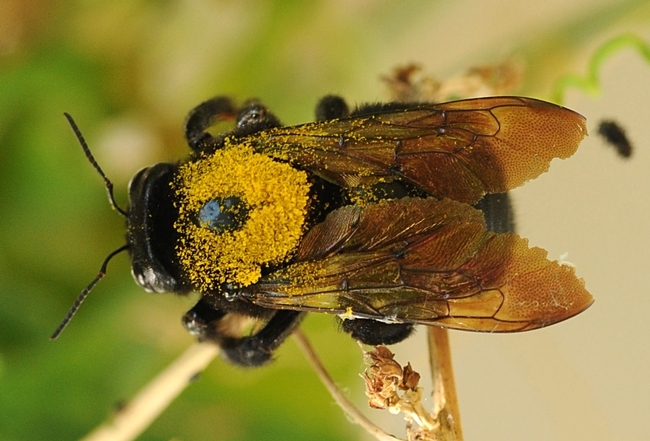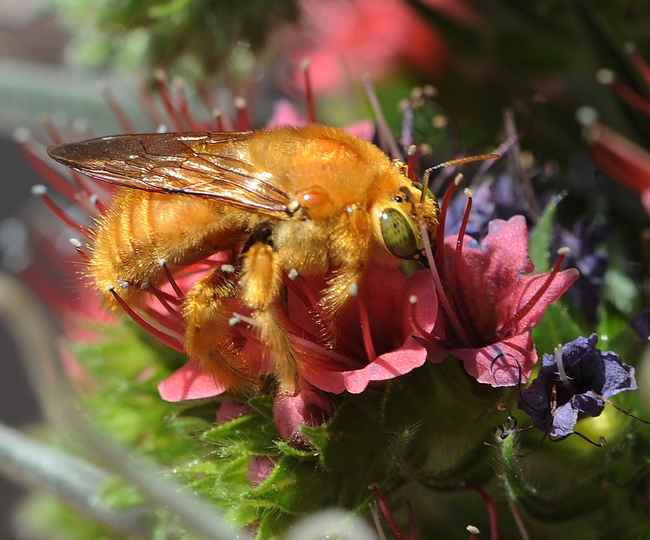UC Blogs
Grape Turtles
The crape myrtles are blooming. Have you noticed? They’re pretty hard to miss, what with their beautiful blossoms in hot fuchsia, spicy red, pale lavender, pretty pink and clear white. These woody perennials thrive in Solano’s zones and offer year-round interest: peeling bark in winter and spring, blooms in summer, and fall leaf color.
I just stumbled across something I’d not realized about Lagerstroemia, the genus also known as crape myrtle. Not everyone spells it like that: CRAPE myrtle. Many spell it CREPE myrtle. Apparently, this is a long-running horticultural debate. Whether it’s spelled crape myrtle, crepe myrtle, crapemyrtle, crepemyrtle or crepe myrtles may simply be a geographical preference, or an evolution of language. In the U.S., the traditional Southern spelling is crepe myrtle (because the delicate flowers resemble crepe paper). Across the rest of the U.S. it is more commonly spelled crape myrtle, which is considered the French spelling. In Europe and Australia and other countries they use the scientific name, Lagerstroemia Crape Myrtle.
But I think my youngest child, Katie, has the best name for the shrubby little trees. As young as first grade, Katie noticed when Vacaville’s crape myrtles started to bloom. Knowing I love the beautiful colors, Katie would point them out: “Look, Mommy! The grape turtles are blooming!” Katie’s nearly 18 now and we still giggle when we notice summer’s explosion of crape myrtle blossoms.
Grape turtles indeed.
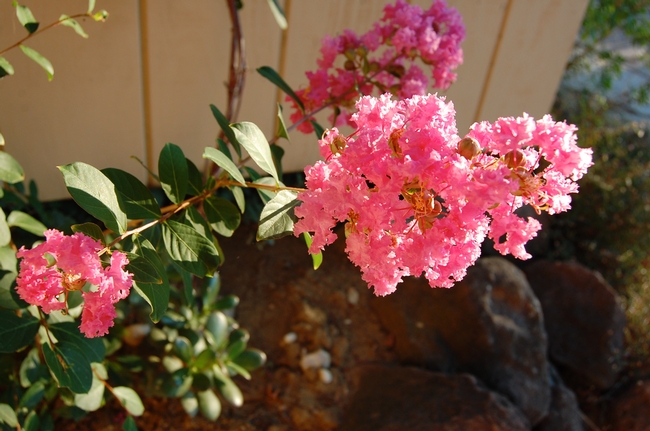
You say crape myrtle, I say grape turtle: Summer in Solano means the Lagerstroemia are in bloom. (photo by Kathy Thomas-Rico)
Turning a Page in Entomological History
It was great to see Robert E. Page Jr., emeritus professor and former chair of the UC Davis Department of Entomology, be selected as one of the 10...
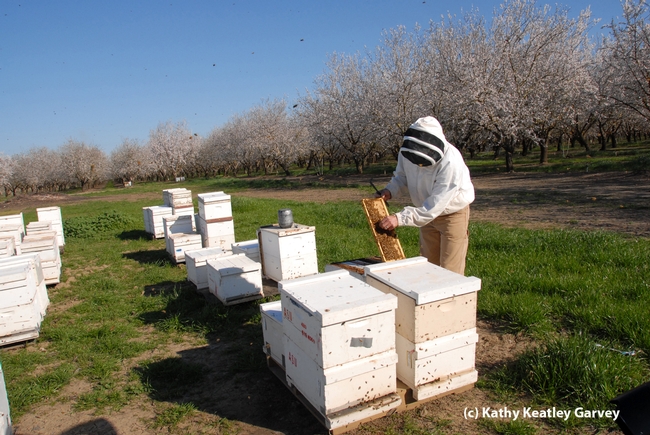
Bee breeder-geneticist Kim Fondrk of UC Davis manages the Robert Page specialized genetic stock. These bee hives were in a Dixon almond orchard. (Photo by Kathy Keatley Garvey)
Third Time Is A Charm
Just this week, the Master Gardeners pulled off an amazing feat. They worked on 3 gardens at the Solano County Fair: an entry way garden, a competition garden, and then a last-minute garden. It was quite the undertaking, but very rewarding in many ways. The gardeners are by no means professional landscapers or designers. They just love plants and putting them together in a landscape. In three days they made the gardens beautiful for the public to enjoy!
The competition garden we entered for the Amateur Gardens was called “Home Tweet Home”. The focus was on the houses of birds, insects, and bats that might be enticed to your yard. There were plants that attract certain insects, a water feature and a small lawn area.
I want to back up a little and tell you how the Master Gardeners got involved at the fair. About 4 years ago, the Master Gardeners were asked to design an entry way garden for the Twilight Theater, the location of the gardens competition. The following year, they decided to enter the Amateur Gardens competition for kicks. Apparently the judges liked their gardens because they have won for the past three years including the 2012 fair.
Every year, the Master Gardeners put forth design ideas, one is selected, and then, with help from the membership, implement of that design. This year, Carolyn Allen created the design themed “Home Tweet Home” (the fair’s theme was “Home Sweet Home”) .The ‘box’ they have to plant in has dimensions of 8’ wide by 16’ long. You might think this is a lot of room to work with, but once you’re there working in the box, it seems much smaller.
There is a lot of planning involved and the Master Gardeners seek help from one another and also look outside the organization to get the materials they need. It is a hectic, but fun event that they love doing year after year. Congratulations to the UC Master Gardeners of Solano County on their first prize at the fair!
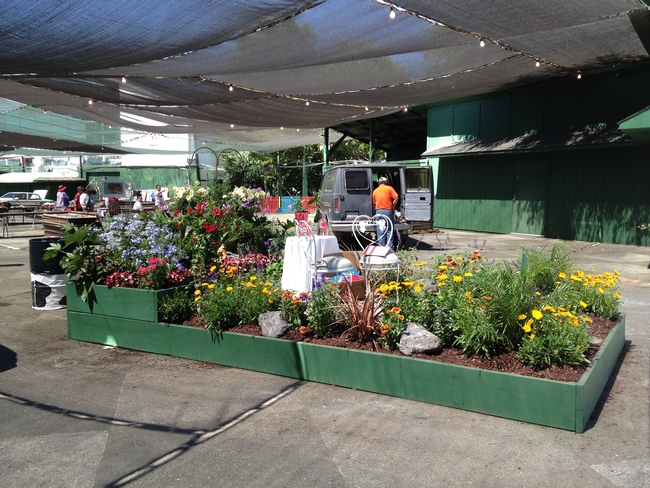
Side-view of the entry way garden in the Twilight Theater. (photo by Jennifer Baumbach)
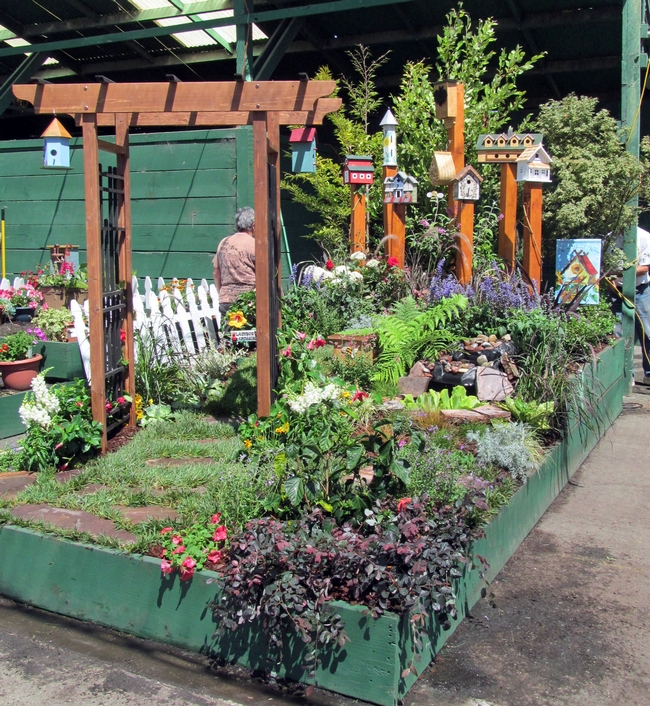
Home Tweet Home almost finished. (photo by Carolyn Allen)
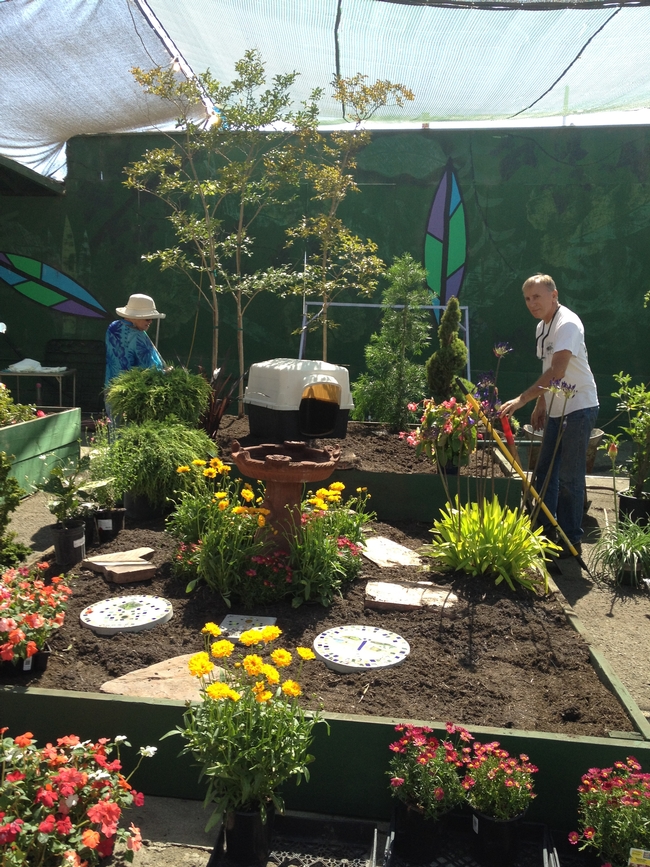
The last-minute garden installation.
Corn should be for food, not fuel, two experts say
A sweeping drought in the Midwest has pushed up corn commodity prices and prompted a UC agricultural economist and his colleague to call for federal authorities to suspend renewable-fuel standards that require the blending of 13.2 billion gallons of corn ethanol with gasoline this year
In an op-ed published in the New York Times, Colin Carter, a professor in the Department of Agricultural and Resource Economics at UC Davis, and Henry Miller, a physician and a fellow in scientific philosophy and public policy at the Hoover Institution, said the U.S. Environmental Protection Agency could divert vast amounts of corn from inefficient ethanol production back into the food chain.
"The price of corn is a critical variable in the world food equation, and food markets are on edge because American corn supplies are plummeting," they wrote. "The combination of the drought and American ethanol policy will lead in many parts of the world to widespread inflation, more hunger, less food security, slower economic growth and political instability, especially in poor countries."
Carter also spoke about the issue on the Capital Public Radio program Insight. He said the rising corn prices will likely have the biggest impact in California on feed lot operators who feed corn and soybean meal to cattle. Dairies will also be hit very hard.
Carpenter bees, bee-ing important pollinators
Carpenter bees (Xylocopa spp.) look like bumble bees. The largest in California are the Central Valley carpenter bees (X. tabaniformis orpifex), more than an inch long. The females are solid black, but the males are golden-blond. The males are sometimes nicknamed “teddy bears” because of their soft, burly, and fuzzy appearance. (See the three California species at http://entomology.ucdavis.edu/news/valleycarpenterbees.html).
Carpenter bees nest in soft wood and pithy stems of plants. Nests usually consist of tunnels half of an inch in diameter and 6-to-10 inches deep and may include several brood chambers. Carpenter bees may buzz like saws when constructing nests (hence their name), but they do not eat the wood. Instead, they forage on flowering plants, feeding on nectar, with the females collecting pollen for their offspring. When they have a sufficient plug of pollen in a chamber, females lay an egg on it, and then seal the chamber with woodchips. Another plug of pollen is then added for numerous chambers per tunnel. Development from egg to larva to adult may take about three months. Carpenter bees overwinter as adults, often in old tunnels. There is only one generation a year.
Like other native bees, carpenter bees are important pollinators in native plant communities, gardens, and in some crops. As they visit flowers and feed on nectar, they pick up and transfer pollen. We depend on insect pollination for a third of our food, including fruits and vegetables, nuts (almonds) and seed crops. Insect pollinators such as honey bees contribute a value of around $29 billion to our agricultural industry with about 15 percent of this value coming from native bees like the carpenter bees. Insect pollinators are also important for pollinating wild plants, contributing a food source for birds and other wildlife.
Some people consider carpenter bees pests because they drill holes or nest in wooden structures. However, their contribution to pollination far outweighs any damage to structures, according to native pollinator specialist Robbin Thorp, emeritus professor of entomology at UC Davis. Unlike the eastern carpenter bee species, which can be damaging to wooden structures, our Central Valley carpenter bees choose softer substrates for their nests such as pithy stems of plants, old logs, and untreated redwood. Using untreated, unpainted redwood for arbors, fences and patio or lawn furniture in this area means learning to share with carpenter bees.
So, before getting out your bottle of insecticide spray for controlling carpenter bees, or plugging their nesting holes, think again about their benefits. Thorp considers the use of any pesticides in the hands of untrained homeowners to be a greater risk to their health and safety than carpenter bees ever will be. Carpenter bees nest in his wisteria-covered arbor and he is most happy to live with them.
With a decline in bee pollinators due to diseases, pests, pesticides, stress, and malnutrition, enjoy the presence of these flashy bees, as they are important pollinators.



